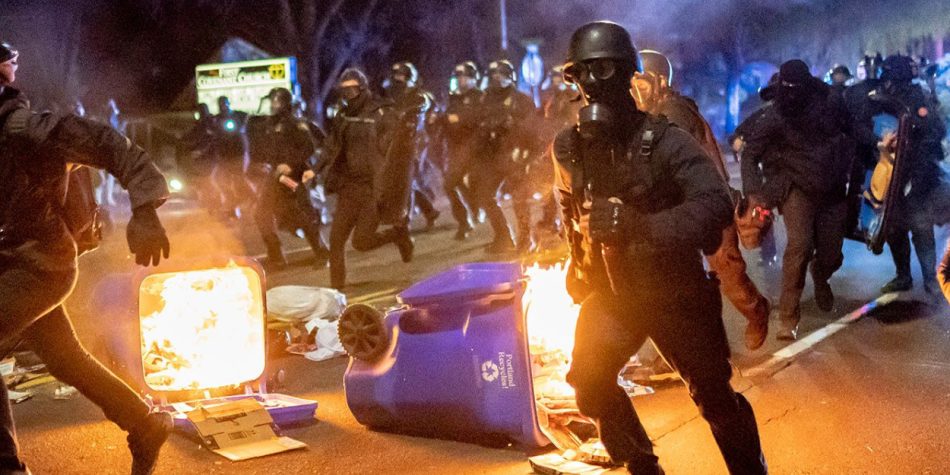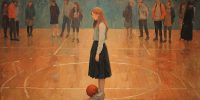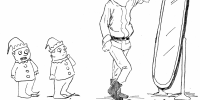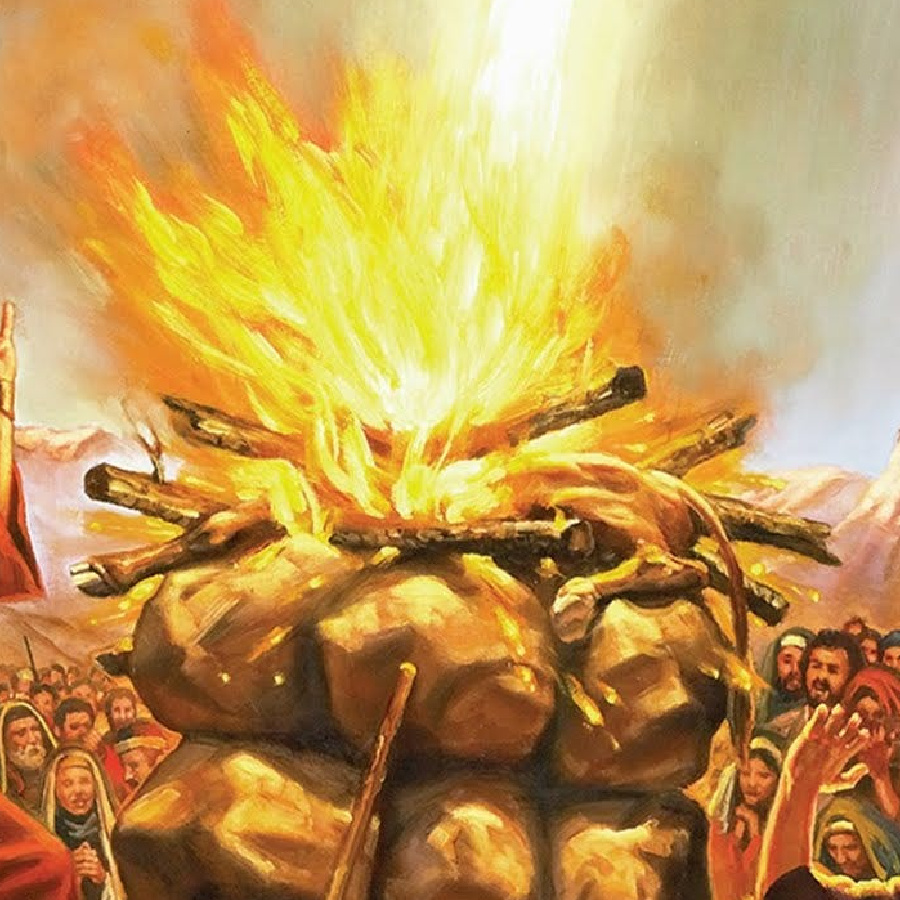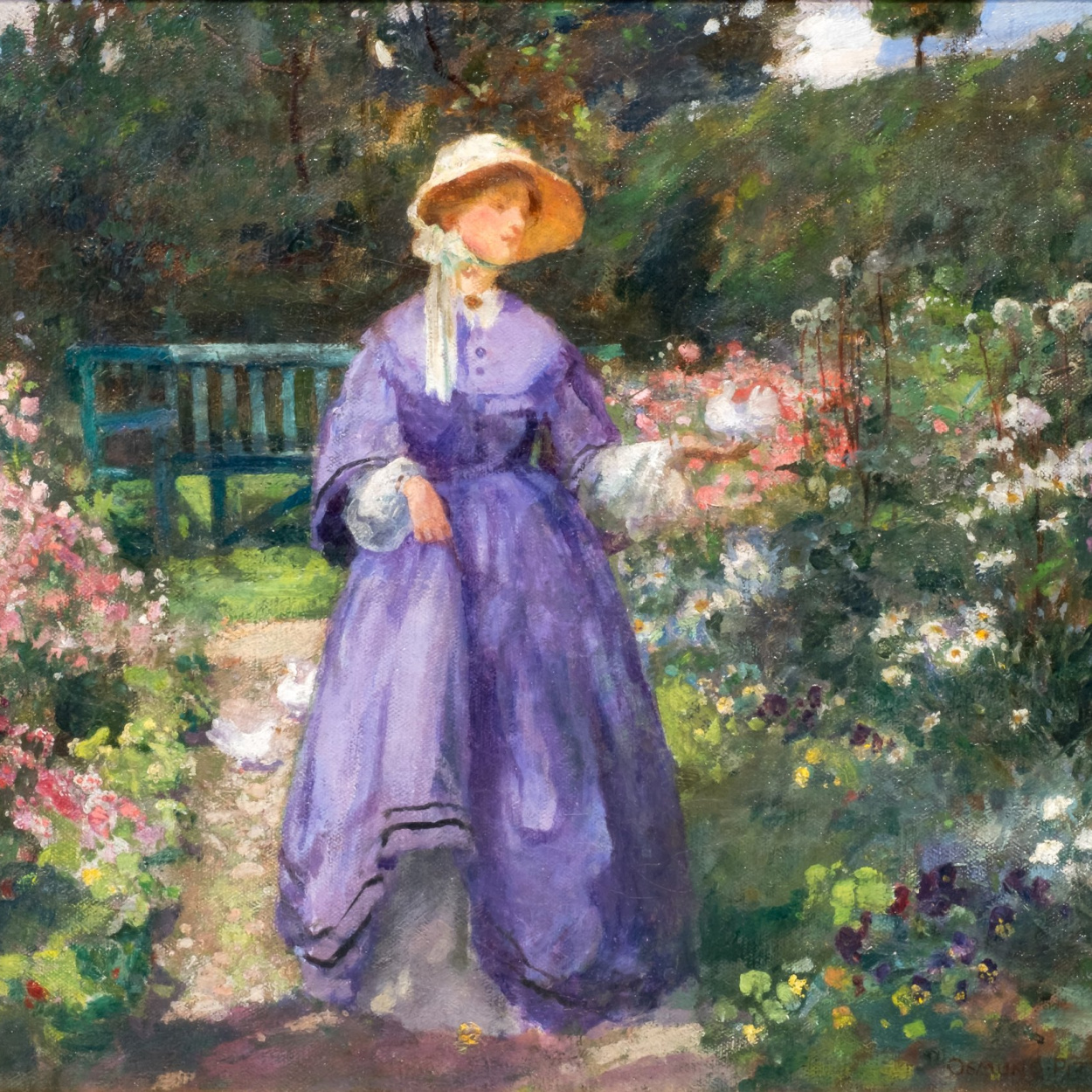November 2020 marked the 100th anniversary of the most quoted poem of modern times, “The Second Coming” by William Butler Yeats. Since we were in the middle of a global pandemic and a bitterly contested election, you may not have noticed. Poynter Magazine did notice, however, and their celebratory article displayed the following title and lede:
“Happy 100th anniversary to the poem that every writer needs to know—‘The Second Coming,’ by the Irish poet William Butler Yeats, which offers many lessons in a year in which the world seems to be falling apart.”
The reason the poem has been so often quoted is that everything seems to be falling apart from time to time somewhere in the world. But even historians feel like this time is different. So do many Christians.
The poem begins with the image of a falcon rising in the air in a widening spiral—soon so high and so wide that it can no longer hear the falconer. Yeats broadens the image to the world. The center can’t hold, and anarchy is loosed like a blood-dimmed tide that drowns everything that is innocent. Good people are silent and the worst people get all the attention.
Turning and turning in the widening gyre
The falcon cannot hear the falconer;
Things fall apart; the centre cannot hold;
Mere anarchy is loosed upon the world,
The blood-dimmed tide is loosed, and everywhere
The ceremony of innocence is drowned;
The best lack all conviction, while the worst
Are full of passionate intensity.
It feels like the end of the world. It feels like the apocalypse. Then Yeats has a vision of a monster rising out of the Spirit of the World, out of the desert sand. The creature has the body of a lion and the head of a man. Its gaze is merciless. It moves slowly across the desert as shadows of desert birds wind around it.
Surely some revelation is at hand;
Surely the Second Coming is at hand.
The Second Coming! Hardly are those words out
When a vast image out of Spiritus Mundi
Troubles my sight: a waste of desert sand;
A shape with lion body and the head of a man,
A gaze blank and pitiless as the sun,
Is moving its slow thighs, while all about it
Wind shadows of the indignant desert birds.
It becomes dark again, leaving Yeats desperately troubled. He realizes that mankind has been asleep for 2,000 years—a nightmare created by a baby. But what caused such difficulty? With a meaning still debated today, he writes that a dangerous beast “slouches” towards its birth in Bethlehem.
The darkness drops again but now I know
That twenty centuries of stony sleep
Were vexed to nightmare by a rocking cradle,
And what rough beast, its hour come around at last,
Slouches towards Bethlehem to be born?
The poem is frightening. When Yeats published “The Second Coming” in 1920, he was surrounded by death. “World War I, the so-called ‘Great War’ was over, but not its terrible consequences of 20 million deaths, to say nothing of injury, madness, and dislocation. The Russian Revolution shook the world order. An Irish rebellion for independence from the British was crushed. And the Spanish Flu pandemic of 1918 and 1919 had killed nearly 100 million. Yeats wrote the poem while his pregnant wife was recovering from a near-death struggle with the disease.” Along with war, unrest, and disease, his poem evokes “anxiety [that] concerns the social ills of modernity: the rupture of traditional family and societal structures; the loss of collective religious faith, and with it, the collective sense of purpose; the feeling that the old rules no longer apply and there’s nothing to replace them.” The “dis-ease” that surrounded World War I in Europe is nearly a mirror image to the anxiety we feel today.
Many writers see disorder today originating in more modern times in the 1960s—and unsurprisingly, the influence of Yeats’ poem shows up in ongoing commentary till this very day. For instance, in 1968, a time of rebellion and confusion, Joan Didion published her book Slouching Towards Bethlehem. Referring to his own era, Didion wrote:
The center was not holding. It was a country of bankruptcy notices and public-auction announcements and commonplace reports of casual killings and misplaced children and abandoned homes and vandals who misspelled even the four-letter words they scrawled. It was a country in which families routinely disappeared, trailing bad checks and repossession papers. Adolescents drifted from city to torn city, sloughing off both the past and the future as snakes shed their skins, children who were never taught and would never now learn the games that had held the society together. People were missing. Children were missing. Parents were missing. Those who were left behind filed desultory missing-persons reports, then moved on themselves. …it might have been a year of brave hopes and national promise, but it was not, and more and more people had the uneasy apprehension that it was not. All that seemed clear was that at some point we had aborted ourselves and butchered the job. …
Whatever serious challenges emerged in the 1960s, certainly, the social ills Didion described are in full bloom now.
Two decades ago, Robert Putnam wrote a book called Bowling Alone. He “charted the decline in community and social capital which had occurred in America in the latter half of the 20th century.”
“Between the mid-1960s and today—by scores of hard measures along multiple dimensions—we have been experiencing declining economic equality, the deterioration of compromise in the public square, a fraying social fabric, and a descent into cultural narcissism, … [o]ver the past five decades America has become demonstrably—indeed measurably—a more ‘I’ society.”
A more recent article is called Commentary: It’s time for the center to stand and to hold. Written in 2009 and republished for its timeliness, it focuses on cancel culture.
In the world of relentless attack, there are no turns. There is no respect for the other. The other is branded unworthy, a demon. The only answer is to destroy, even if the destruction of one means the destruction of many and the obliteration of sanity and hope.
It is time for the center to stand and to hold, to say to all extremists that our future as a nation and democratic society lies in finding common ground, not in relentless attacks.
And Resilience.org adds, “Americans seem to think we can treat Democracy with careless neglect and it will still continue to serve us. We act as if we are entitled to both our views and our citizenship, when in fact it requires hard work and sacrifice to make our country work. It is painfully true “the best lack all conviction, while the worst are full of passionate intensity. And the worst occur at the narrow fringes of our social and political views.” Polarizing politics, cancel culture, and “fake news” are fraying our families.
Service clubs aren’t the only institutions struggling to fill their ranks with younger members. Gallup finds the percentage of Americans who report belonging to a church, synagogue, or mosque at an all-time low, averaging 50% in 2018. A 2014 study commissioned by the National Club Association found that country club membership was down 20 percent from 1990. … “This generation right now, they are not joiners,” said Schaper of the Portage Lions. “Some of them are eager to help if you ask them, but they aren’t interested in joining your club.”
Ah, yes, churches. We all know about the rise of the “nones”—the unaffiliated. But do we know that many pastors are giving up on their flocks? Partly because of dwindling numbers of congregants, but mostly because of discord and contention within their congregations. The center isn’t holding. Further atomization is occurring at the family level, not just the “club” or congregational level. Polarizing politics, cancel culture, and “fake news” are fraying our families. Rare is the extended family that has not been divided by recent political turmoil or individual beliefs in conspiracy theories. A slew of articles sadly report individuals choosing loyalty to one of the many available conspiracy theories over relationships with sons, daughters, parents.
Perhaps all eras of history have felt chaotic and dangerous in certain ways, but today Yeats’ portrayal of a center yielding to chaos seems more profound than ever because it’s not just our social connections that are fraying.
Modern revelation from The Church of Jesus Christ of Latter-day Saints has this to say about the times leading up to the Second Coming of Christ:
And in that day shall be heard of wars and rumors of wars, and the whole earth shall be in commotion, and men’s hearts shall fail them, and they shall say that Christ delayeth his coming until the end of the earth.
And the love of men shall wax cold, and iniquity shall abound (emphasis mine).
Right now, it’s not just human relationships and politics that are dissembling but the earth itself, with the ravages of climate change, pollution, and unwise use wreaking havoc with the weather, plant life, animal life, insect life, birdlife, and sea life. In other words, this time chaos is posing an existential threat not just within a localized area and time, but worldwide and ongoing until the center cannot and will not hold.
Who Is the Rough Beast?
Literary critics have understandably tried to analyze Yeats’ poem from the perspective of his time and place. They argue that the slouching beast in his poem isn’t failing or falling but is sure in his strength. His slouching is more of a menacing posture than a weakness. As Roy Peter Clark, Senior Scholar at the Poynter Institute reminds us …
Yeats hated the idea of democracy. He believed in aristocracy and hierarchy, in eugenics to weed out the weaker races, and he was an early advocate of fascism—as a buffer to communism—until Hitler demonstrated where that path led.
Some see the beast through Yeats’ eyes as a unifying but punitive authoritarian government that would have the ability to tie things together and get the center to hold. But what if the rough beast is Christ? Latter-day Saint poet Clinton F. Larson described what the Second Coming of Christ will look like to the wicked. Most of the poem is given to a sumptuous description of table setting and feast preparation to welcome the gentle God. Yet rather than a comforting, consoling presence, the hosts are beset by a God of fury—a Lion! “But out of the East the breath is fire! Who comes with temblor, sound of hurricane? Who rages on the portico? Who claps his vengeful steel on stone? Who comes to dine?” The servants cower like quail in the antirooms.
Advent
The gentle God is our guest:
His staff will prompt us to the door.
The table is set in the oak-paneled room:
The goblets are rinsed and set out,
The warm vapor vanishing around them;
The silver, withdrawn from felt-lined red mahogany,
Is counted and burnished to mercurial white
And set on immaculate linen,
Sleek with crystal and rococo ware.
The table is set for the Guest
Near the imminent door.
The servants stalk
Each gray indiscretion to be rent
On the merciless rack of their decor.
The table is set for the Gentle God:
The roasted fowl entice the savoring tongue;
The marmalade and sweetmeats brim
The centerpiece, a horn;
The fruit is full, plucked in prime,
Oranges, apples, pears
Like noon-shade autumn leaves.
The supper will please the gentle God
Who surely comes,
Who comes like the breath on a veil.
But out of the East the breath is fire!
Who comes with temblor, sound of hurricane?
Who rages on the portico?
Who claps his vengeful steel on stone?
Who comes to dine?
The servants cower like quail in the antirooms.
Who blasphemes in the shuddering halls?
Who rends the imminent door? Our guest is a gentle God, a Lamb.
Out of Chaos, Gathering
Certainly, we who are looking for the imminent Second Coming by watching the signs of the times see increasing chaos as one of those signs. We look at the events that surrounded Yeats as examples since they took place during the Last Dispensation of Time and their effects still resound and amplify in the here and now.
Yeats’ poem is nothing but depressing, reflecting his times of unrest, war, and disease, making us want to cower, but naturally, he was not the only wordsmith grieving over the world-changing events of that era.
In October 1918, then President of The Church of Jesus Christ of Latter-day Saints, Joseph F. Smith, was surrounded by death and bemoaning his own personal losses. His father, Hyrum Smith, was martyred when he was 5. Mourning and sadness surrounded him in his childhood, as well as confusion as to what the Saints would do next. His widowed mother, Mary Fielding Smith, died when he was 13. During his lifetime, President Smith lost his father, his mother, one brother, two sisters, two wives, and thirteen children. He was well acquainted with sorrow and losing loved ones. He grieved over the death toll from the great war and pandemic just like Yeats was grieving.
Yet rather than ruminating in despair, Prophet Smith had been receiving increasing revelation from heaven regarding the afterlife—revelation that gave him increased hope. We like to speak about the veil that separates our coarse world from the heavenly realm, and for the Prophet, this veil was becoming thinner and thinner. He was beginning to realize that the spirits of the dead—not just past prophets, but loved ones who have passed on—are very near and emotionally close to us.
In the April 1916 General Conference of the Church, 30 months prior to his culminating vision of the spirits of the dead, he delivered an address called “In the Presence of the Divine.” Of the post-mortal estate, he said, “Sometimes the Lord expands our vision from this point of view and this side of the veil so that we feel and seem to realize that we can look beyond the thin veil which separates us from that other sphere. … they are as deeply interested in our welfare today, if not with greater capacity, with far more interest, behind the veil, than they were in the flesh. Christ’s Second Coming will cleanse the wicked from the earth, after death, He offers healing to all who will accept it.
For Christ also hath once suffered for sins, the just for the unjust, that he might bring us to God, being put to death in the flesh, but quickened by the Spirit:
By which also he went and preached unto the spirits in prison; Which sometime were disobedient, when once the longsuffering of God waited in the days of Noah, while the ark was preparing, wherein few, that is, eight souls were saved by water.
For for this cause was the gospel preached also to them that are dead, that they might be judged according to men in the flesh, but live according to God in the spirit.
I find it beautiful that while things were in chaos on the earth with untold suffering, the splintering of families, and millions of deaths, everything was being mended in the Spirit World … families reunited, healing provided by the Savior of all. Perhaps this can bring some added comfort to us today—the stunning recognition of the provision of reconciliation and repentance in the Spirit World by Jesus Christ. Repentance, reconciliation, resurrection, and redemption are able to heal all the wounds and losses suffered by Yeats the Poet and Smith the Prophet, you and I, and indeed all living things.
While yes, Christ’s Second Coming will cleanse the wicked from the earth, after death, He offers healing to all who will accept it. He wants us to come home. This gathering overcomes all the “separateness” and chaos that evil inflicts upon us. It not only gathers us into the arms of Christ but into the arms of each other. Even as we approach the Apocalypse and the center stops holding on earth, it does hold in eternity. I rejoice to know that, in the end, all things in heaven and earth will be gathered together as one in Christ.

